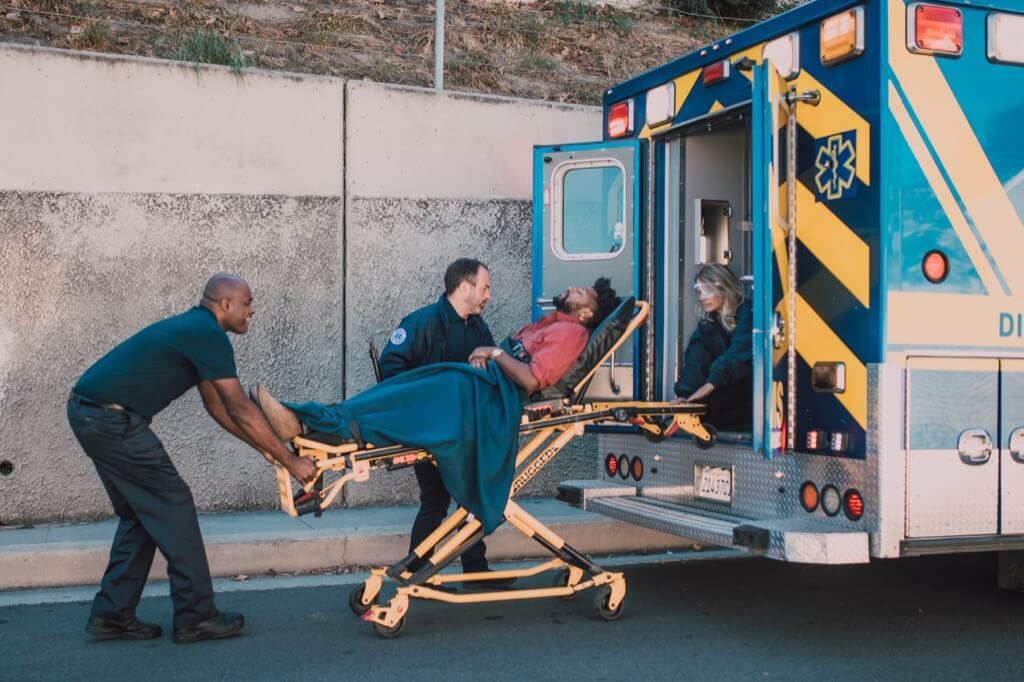Accidents can happen when you least expect them, and being equipped with basic first-aid knowledge can make all the difference in critical situations. In this comprehensive guide, we’ll delve into essential first-aid techniques that everyone ought to know. From stopping bleeding to handling burns and fractures, we’ve got you covered.
Applying Pressure
Dealing with bleeding can be intimidating, but it’s crucial to act swiftly in emergencies. Learn how to apply pressure to control bleeding, potentially saving lives:
- Use a clean cloth or towel to soak up blood.
- Apply mild pressure to the bleeding area.
- Elevate the injured limb if possible to reduce blood flow.
- Maintain pressure until bleeding stops or professional help arrives.
Burns and Scalds
Understanding how to handle burns and scalds can alleviate pain and reduce severity. Avoid common misconceptions like using ice, which can cause further damage:
- Do not use ice on burns, as it can cause further tissue damage.
- Apply moist, cool (not cold) garments to the affected area.
- Remove any clothing or jewelry near the burn site.
- Seek medical attention for severe burns or if the burn covers a large area.
CPR
Cardiopulmonary resuscitation (CPR) is a vital skill that can prevent brain damage when administered within minutes of a cardiac arrest:
- Ensure the person is lying on a flat surface.
- Begin chest compressions at a rate of 100-120 per minute.
- Combine chest compressions with rescue breaths if trained to do so.
- Continue CPR until professional help arrives or the person shows signs of life.
The Heimlich Maneuver
Learn how to perform the Heimlich Maneuver to dislodge objects stuck in someone’s throat, potentially preventing choking-related injuries or fatalities:
- Stand behind the choking person and place your arms around their waist.
- Make a fist with one hand and place the thumb side against the person’s upper abdomen, just below the ribcage.
- Grasp your fist with your other hand and apply inward and upward pressure.
- Repeat abdominal thrusts until the object is expelled or help arrives.
Handling Fractures
In cases of broken bones, immobilization is key to prevent further damage. Explore how to apply splints and elevate the injured area safely:
- Apply a splint to keep the injured limb stable and immobilized.
- Use soft paddings, like clothing or bandages, between the splint and the limb.
- Elevate the fractured limb gently to reduce swelling.
- Apply a cold compress to the fracture but avoid direct contact with the skin.
Trauma and Shock
Traumatic accidents can be distressing. Learn the importance of remaining composed and keeping trauma victims as motionless as possible:
- Keep the person lying down unless they are in immediate danger.
- Offer reassurance and comfort to the injured individual.
- Monitor their vital signs, such as breathing and pulse.
- If there are signs of shock (e.g., rapid heart rate, extreme anxiety), keep them as still as possible.
Sprains and Breaks
Sprains and fractures are common injuries, and knowing how to handle them is essential. Discover the immediate steps to reduce swelling using ice for these injuries:
- Apply an ice pack for 10-20 minutes to reduce swelling.
- Place a cloth or barrier between the ice pack and the skin to prevent frostbite.
- Elevate the injured area to minimize swelling.
- Seek professional medical evaluation for severe fractures or dislocations.
Anaphylaxis
Severe allergic reactions can be life-threatening. Understand the signs of anaphylaxis and learn how to administer an adrenaline injector, such as an EpiPen, to individuals with a history of allergies.
- Inject the adrenaline (epinephrine) into the outer thigh.
- Follow the instructions on the injector device.
- Seek immediate medical attention after administering epinephrine.
- Monitor the person’s vital signs while waiting for help.
Stroke
Recognizing the signs of a stroke is crucial for prompt intervention. Familiarize yourself with the FAST protocol to identify strokes and seek immediate medical help:
- Learn the FAST protocol: Face drooping, Arm weakness, Speech difficulty, and Time to call 911.
- If someone shows these signs, call 911 immediately.
- Do not wait for symptoms to resolve; time is critical in stroke cases.
- Stay with the person until professional help arrives.
Heart Attack
Quick action during a heart attack can be the difference between life and death. Discover how to help someone experiencing a heart attack by getting them into a comfortable position and calling 10177 promptly:
- Help the person sit down in a comfortable position.
- Call 10177 immediately for emergency medical assistance.
- Offer aspirin if available and the person isn’t allergic.
- Monitor the person’s condition and be prepared for CPR if needed.
The Recovery Position
Learn when and how to place an unconscious person in the recovery position. Ensure their safety by preventing choking while they are unconscious and breathing.
- Ensure the person is unconscious and breathing.
- Gently tilt them onto their side with the upper leg bent to prevent rolling.
- Keep the person’s airway clear to avoid choking on fluids.
- Monitor their breathing and vital signs while waiting for help.
Calling for Help
In any medical emergency, calling is essential. Understand the importance of alerting professional help promptly and never underestimate its significance in critical situations:
- Dial 10177 immediately in emergencies to get professional help on the way.
- Provide the dispatcher with clear information about the situation.
- Stay on the line and follow any instructions given by the dispatcher.
- Do not hesitate to call for help, even if you’re unsure of the severity of the situation.
Frostbite
While frostbite should be treated by a medical professional, you can ease pain and discomfort temporarily. Learn how to safely warm the affected area with water within the recommended temperature range:
- Remove the person from the cold environment.
- Soak the affected area in warm (not hot) water for 20-30 minutes.
- Ensure the water temperature is between 98–105 degrees Fahrenheit.
- Seek immediate medical attention for frostbite treatment.
Electric Shock
Electric shock can vary in severity, and safety is paramount. Understand the protocol of waiting for the power to be turned off before attempting to assist a victim, especially if they are unconscious:
- Do not approach an electric shock victim until the power source is turned off.
- Ensure the person is safe from further electrical contact.
- If the person is unconscious and not breathing, begin CPR after ensuring safety.
- Call for professional medical assistance immediately.
Nosebleeds
Dealing with a nosebleed requires the correct approach. Avoid the misconception of tilting the head backward, as it can lead to choking:
- Do not tilt the head backward, as it can lead to choking on blood.
- Pinch the soft part of the nose and lean the person slightly forward.
- Continue pinching the nose for 10-15 minutes until bleeding stops.
- If bleeding persists, seek medical attention.
Bee Stings
Bee sting allergies can strike unexpectedly. Be vigilant and seek immediate medical attention upon noticing hives, flushing, or significant swelling in someone who has been stung:
- Be vigilant for signs of an allergic reaction, even in individuals with no history of allergies.
- Administer epinephrine (if available) and call 10177 for severe allergic reactions.
- Monitor the person’s breathing and vital signs.
- Seek immediate medical attention for bee sting allergies.
Assessing Safety
Before rushing to assist an injured individual, ensure your safety first. Evaluate the scene for potential dangers to avoid putting yourself at risk:
- Assess the scene for potential dangers, such as traffic, fire, or hazardous materials.
- Ensure your safety gear is in place, if available.
- Call for professional help if the situation is unsafe for you to handle alone.
- Be cautious and aware of your surroundings.
Offering Reassurance
In times of trauma, offering reassurance is invaluable. Providing emotional support to individuals experiencing traumatic events or emergencies is vitally important in any traumatic situation:
- Provide emotional support and comfort to individuals experiencing traumatic events.
- Be a calming presence and offer words of encouragement.
- Listen to their concerns and reassure them that help is on the way.
- Stay with the person until professional assistance arrives.
Head Injuries
Head injuries can range from mild to severe, and vigilance is crucial. Learn to recognize unusual symptoms, such as lethargy or disorientation, and act promptly if you suspect a head injury:
- Watch for unusual symptoms such as lethargy, disorientation, or severe headaches.
- Encourage the person to remain still and avoid unnecessary movement.
- Call 10177 if you suspect a severe head injury.
- Keep the person under observation until professional help arrives.
Medical Gloves
Always wear medical gloves when providing first aid, especially for injuries involving blood. Gloves protect against direct contact with infectious diseases and cross-contamination:
- Use disposable medical gloves to prevent direct contact with bodily fluids.
- Change gloves between different tasks to avoid cross-contamination.
- Dispose of used gloves properly after providing first aid.
- Hand hygiene is essential; wash your hands thoroughly after glove removal.
Ice Packs
Ice packs are reliable tools for soothing minor injuries. Apply them safely for 10-minute intervals to reduce swelling and expedite the healing process:
- Apply an ice pack wrapped in a cloth for 10 minutes at a time.
- Use ice to reduce swelling and alleviate pain for minor injuries.
- Avoid direct skin contact with ice to prevent frostbite.
- Allow the skin to rest between ice applications.
Plant Rashes
Outdoor enthusiasts should know how to treat plant rashes effectively. Here are the correct steps to cleanse the affected area and prevent further irritation:
- Cleanse the affected area and any items that may have come into contact with the plant.
- Apply hydrocortisone cream to the rash for soothing relief.
- Seek medical attention if the rash is severe, spreading, or causing extreme discomfort.
- Be cautious and learn to identify common toxic plants like poison ivy.
Tending to Wounds and Scrapes
Master the skill of treating minor wounds and scrapes by ensuring proper hygiene. Stop bleeding, cleanse the wound with saline solution, and promote healing:
- Wash your hands thoroughly before providing first aid.
- Use a clean cloth or gauze pad to stop bleeding.
- Cleanse the wound with saline solution to remove debris.
- Apply an antibiotic ointment and cover the wound with a sterile dressing.
Draining Blisters
Understanding how to drain blisters correctly can be useful. The safe approach to this procedure, includes sterilization and puncturing techniques, to alleviate discomfort:
- Wash your hands and sterilize a needle with alcohol.
- Puncture the blister at its edge and allow the fluid to drain.
- Apply an antibiotic ointment and cover the blister with a sterile bandage.
- Avoid removing the blister’s top layer to prevent infection.
Diarrhea
While diarrhea may not seem concerning, it can lead to severe dehydration in certain cases. Administer rehydration medication promptly to prevent complications:
- Administer oral rehydration solutions as recommended.
- Consult a healthcare provider for children, the elderly, or severe cases.
- Encourage fluid intake to replace lost fluids and electrolytes.
- Monitor the person’s condition and seek medical attention if dehydration worsens.
Splinter Removal
Splinters can be bothersome and lead to infections if not removed correctly. Remove splinters with sanitized tweezers to prevent complications:
- Use high-quality, sanitized tweezers to grasp the splinter.
- Pull the splinter out in the same direction it entered the skin.
- Cleanse the area with an antiseptic and apply an adhesive bandage.
- Monitor for signs of infection, such as redness or swelling, in the following days.
Being prepared is essential. Keep a first aid kit readily available in your home and car to ensure you have the necessary supplies in case of emergencies:
- Stock your first aid kit with bandages, sterile gauze, adhesive tape, scissors, and tweezers.
- Include personal medications, pain relievers, and allergy medication if needed.
- Regularly check and replenish your first aid supplies to keep them up-to-date.
- Familiarize yourself with the contents of your kit and how to use them effectively.
Basic first-aid knowledge is invaluable and can make a significant difference in emergencies. By mastering these essential techniques, you can be better prepared to assist when it’s needed most. Remember that professional medical help should always be sought for serious injuries and emergencies.




